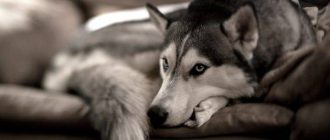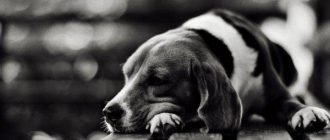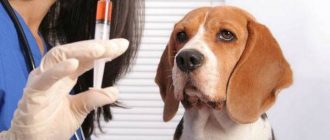Carnivore plague (infectious catarrhal fever) – acute ongoing viral disease characterized by fever, catarrh mucous membranes, pneumonia, cutaneous exanthema and lesion nervous system
The causative agent of the disease is the RNA genomic virus, has immunosuppressive properties.
The plague virus is susceptible: the canine family (dogs, raccoons, wolves, foxes), family of marten (mink, sable) and other carnivores animals. Sick animals of all ages, but the most susceptible puppies 2-5 months of age.
The source of infection is sick and ill animals, as well as animals in the incubation period. Virus Carrier Continues 2-3 months in dogs, in fur animals – up to 6 months. Pathogen excreted from the body with outflows from the nose and eyes, when coughing, sneezing, with saliva, urine and feces.
Symptoms
Contents
The incubation period is 2-14 days. The current is super sharp acute, subacute, chronic, but can occur atypically and abortive. Depending on the symptoms, they distinguish between nervous, pulmonary, intestinal, mixed and skin forms of the disease.
Pulmonary form
In acute course, it is accompanied by an increase in body temperature to 39.5 оС, which is kept at such a level for 10-15 days. The skin of the nose mirror is dry, cracks may appear. Across 1-2 days after an increase in temperature, serous mucous membranes appear, and then purulent discharge from the eyes, leaving the eyelids stick together, eyes close. Rhinitis develops, while from serous-purulent exudate is secreted on the nasal cavities, on the nasal crusts form in the mirror, nostrils stick together, breathing becomes puffing, appears first dry and then wet cough.
Intestinal form
Accompanied by the development of catarrhal inflammation of the mucosa the membrane of the stomach and intestines, and is manifested by diarrhea. Feces liquid gray-yellow, and later brown. With hemorrhagic inflammation of the rectum in feces detect traces of blood. Besides addition, there may be vomiting.
Nervous form
With the nervous form of the plague, the animals are excited convulsive contraction of the masticatory muscles and limbs may be paresis and paralysis of the hind limbs, epileptic seizures, clonic and tetanic convulsions appear.
Treatment
Treatment should be comprehensive using specific and symptomatic remedies. Most effective specific currently means are: avirokan (specific dogs immunoglobulin against plague, hepatitis, coronavirus enteritis and carvivorous parvovirus); immunoglobulin against parvovirus enteritis and carnivore plague; globulin therapeutic versus plague, enteritis and hepatitis carnivores. Somewhat smaller polyvalent serum against plague is effective parvovirus enteritis and hepatitis carnivores.
Recently, drugs have become widespread, belonging to the group of immunostimulants: anandine, immunofan, cycloferon, cinoron, mixoferon, comedone and ribotan. To suppress secondary 38 bacterial microflora use antibacterial drugs with prolonged action. After the course antibiotic therapy is mandatory the use of probiotics: lactobacterin, bifidumbacterin, bactisubtil, enterobifidin.






